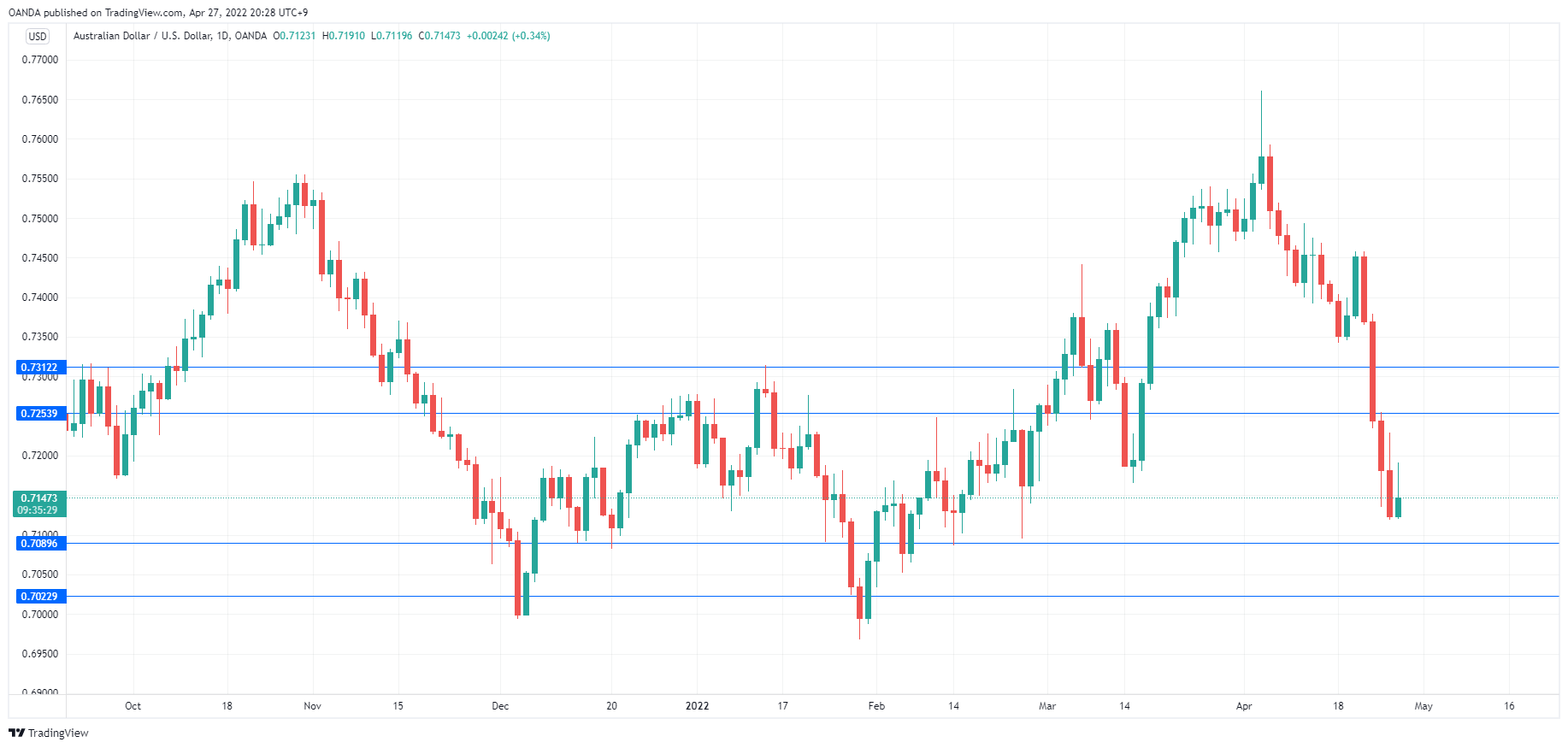The Australian dollar has finally turned things around after a nasty four-day slide. AUD/USD as much has 330 points during that time but is currently trading at 0.7149, up 0.37% on the day.
CPI higher than expected
Australian inflation continues to accelerate, with CPI in Q1 rising to 5.1% YoY, after a Q4 release of 3.5%. This easily beat the consensus of 4.6%, and is the highest since the GFC back in 2008. Inflation has been widely distributed, as seen in Core CPI, which climbed 3.7% (2.6% prior), above the forecast of 3.4%.
With inflation showing no signs of easing, it is a no-brainer that the RBA will have to step in and deliver a series of rate hikes to curb inflation. What isn’t as clear is the timing of a lift-off rate increase. The RBA meets next week, but with a federal election at the end of May, the RBA would prefer to avoid any major moves until after the election. The problem is that the central bank is under strong pressure on two fronts to raise rates – there is the inflation issue as well as the aggressive rate hikes we are seeing from other major central banks.
The Federal Reserve, for example, is widely expected to raise rates by 0.50% next week and could follow up with more such hikes, as it struggles to contain spiralling inflation. This means that the RBA could press the trigger at next week’s meeting. Whether the RBA makes a move in May or waits until June, an oversize hike of 0.40% looks increasingly likely.
The strong inflation report appears to have cemented an imminent rate hike, which has given a much-needed boost to the Australian dollar. The Aussie is still trading close to 2-month lows, as a jump in risk apprehension as weighed on risk-sensitive currencies like the Aussie. China is experiencing sharp growth pains, exacerbated by the harsh zero-Covid policy which has dampened growth. This could disrupt supply chains and have an impact on the Australian economy.
AUD/USD Technical
- There is support at 0.7089 and 0.7023
- AUD/USD faces resistance at 0.7253 and 0.7312


